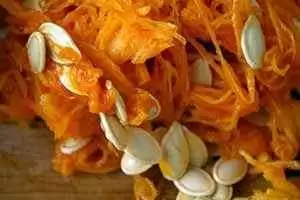
Celiac.com 10/08/2014 - The one condition that accounts for almost half of the patients who seek out gastroenterologists is IBS (Irritable Bowel Syndrome). Many celiacs suffer from this ailment. IBS is a ‘functional’ disorder, meaning that there is no damage to the digestive tract. Only the bowel’s function, not its structure, is disturbed.
Here is Where the Irony Begins
Patients suffering from constipation are encouraged to consume a lot of dietary fiber (non-digestible carbohydrates and lignin from plants) because it acts as a mild laxative and promotes bowel evacuation. A ‘mild laxative’ is the last thing someone with diarrhea needs, right? Wrong! It is recommended that IBS patients go on a high-fiber diet.
Celiac.com Sponsor (A12):
Studies show that IBS patients on a high fiber diet report a reduction in pain; those on a low fiber diet do not. Bowel habits improve in about half of IBS patients on the high fiber diet. Even for people who do not have IBS, doctors recommend that we all include more fiber in our diets.
So How Much is ‘Enough’ Fiber?
The daily recommendation is 25 to 35 grams of combined soluble fiber (dissolves in water) and insoluble fiber (‘roughage’ that does not dissolve in water). Peas, beans and apples contain soluble fiber, which slows digestion and helps the body absorb nutrients from food. Flax seeds and nuts provide insoluble fiber, which helps foods pass through the stomach and intestines and adds bulk to the stool. Fiber is found in plant foods and cannot be digested by humans. It may also help control weight because it makes you feel full sooner. The total grams of fiber you should ingest depends on your digestive system’s sensitivity.
Just a warning: A high-fiber diet causes gas because the carbohydrates in high-fiber foods cannot be completely digested in the stomach and small intestine. It is best to increase the amount of consumed fiber slowly to allow your body to get used to it gradually. Additionally, it is vital to increase water consumption in proportion to the increased intake of fiber.
Where Do You Find Fiber?
Fiber is found in vegetable gums (konjac gum, gum Arabic, carrageenan, guar gum, locust bean gum, petin vegetable gums, xanthan gum). It is also found in nature, in the foods we harvest from the ground. The following list shows some of the foods that are high in fiber:
- 1 oz. dry almonds (3g)
- 1 oz. roasted pumpkin seeds (10.2g)
- 1 oz. sunflower seeds (4g)
- 1 unpeeled medium apple (3.7g)
- 1 unpeeled pear (4.5g)
- 1 kiwi (5g)
- 4 oz. dried, sulfured apricots (8.8g)
- 4 oz. dried figs (10.5g)
- 10 dried prunes (6.1g)
- 1 cup raspberries (9g)
- ¾ cup blackberries (7g)
- ½ cup baked beans (7g)
- ½ cup chick peas (7g)
- 1 cup boiled lentils (15.6g)
- ½ cup canned lima beans (5.8g)
- ½ cup navy beans (6.7g)
- ½ cup pinto refried beans (11g)
- 1 corn on the cob (5.9g)
- 1 cup white corn (11.2g)
- 3 ½ cups air-popped popcorn (4.5g)
- 2 oz. corn pasta, cooked (7.9g)
- ½ cup frozen peas, cooked (4.2g)
- 1 cup spinach (4g)
You may have to eat 50 stalks of celery each day to get your recommended amount of fiber, or you may prefer to incorporate the suggestions below:
- Add nuts and seeds (sesame seeds, pumpkin seeds, sunflower seeds) to salads and casseroles, sprinkle them over vegetables, or add them to a stir-fry. You can also sprinkle them with seasonings and roast them slowly in the oven for a healthy snack.
- Add cooked dried beans and shredded carrots to everything from salads to soups, stews, casseroles, meatloaf, or even rice (Note that cooking vegetables does not change their fiber content).
- Eat plenty of fruits (especially citrus fruits), berries, prunes, figs or apricots. Keeping the skins on fruits (and vegetables) will add a small amount of extra fiber, but the skins are the part that are most exposed to pesticides, so unless you are buying organic fruits and vegetables, you may be better off peeling them first.
- Snack on popcorn (Air-popped is the healthiest).
- Sprinkle raisins on salads, puddings, canned fruit, baked apples, sweet potatoes, cereal, or just eat them plain as a snack.
- Add shredded cabbage and peas to salads, soups, wraps, stir-fries, and stews.
- Use brown rice or quinoa in place white rice.
- Add shredded apples to pancake batters, quick breads, and yam dishes. Serve a baked apple for dessert instead of cookies.
- Eat a fresh apples, apricots, prunes or oranges instead of drinking their juice.
- Add dried cranberries to cereal, quick breads, muffins, cookie batter, yam dishes, and salads. Make up a bowl of nuts, raisins and dried cranberries for a snack.








Recommended Comments
Create an account or sign in to comment
You need to be a member in order to leave a comment
Create an account
Sign up for a new account in our community. It's easy!
Register a new accountSign in
Already have an account? Sign in here.
Sign In Now